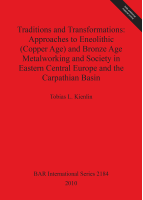Description
BOOK DESCRIPTIONThis study was conceived of some years ago as a sequel to the metallographic examination of Early Bronze Age axes from the north alpine region of central Europe. The original impetus was to provide a long-term perspective on the development of methods ofcasting and forging by extending the data base to Eneolithic/Copper Age material. In addition, by a shift east to the Carpathian Basin an attempt was made to allow for the existence of different traditions of early metalworking and compare regional trajectories into the metal ages. The approach may be termed cognitive since metallographic data, that is the examination of a metal object's microstructure, is used to reconstruct chaînes opératoires in the production of early metal objects and to compare theknowledge Eneolithic/Copper Age and Bronze Age metalworkers had gained of the different types of copper and copper-based alloys they were working. In the first instance therefore this work represents is an archaeometallurgical study in the early phases of metallurgy in parts of central and south-eastern Europe. Metallographic data from a large series of Eneolithic/Copper Age shaft-hole axes and flat axes is first published here in detail. The findings from this examination are discussed and both groups of implements are compared in terms of variation in their production parameters. This variation is related to both the technological change that came about during the Eneolithic/Copper Age and to a shift in emphasis placed on the production of shaft-hole implements and more mundane flat axes respectively. The conclusions drawn relate to genuinely archaeological questions. At least, the author hopes that they are of wider archaeological relevance and they are framed in such terms as to arise the interest ofan archaeological audience beyond the sub-discipline of archaeometallurgy. There is also new data on Bronze Age material contained in this study, but most discussions related to that period draw on previously published data as well and try to integrate both data sets into a more comprehensive picture than was previously available.











